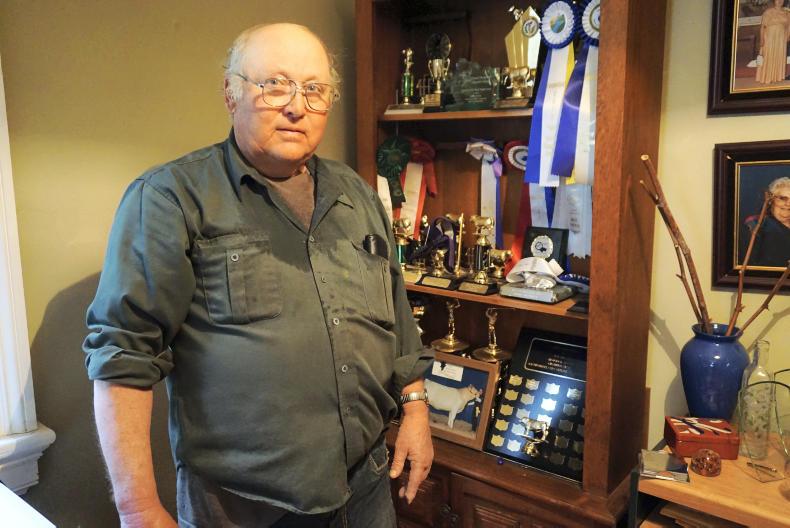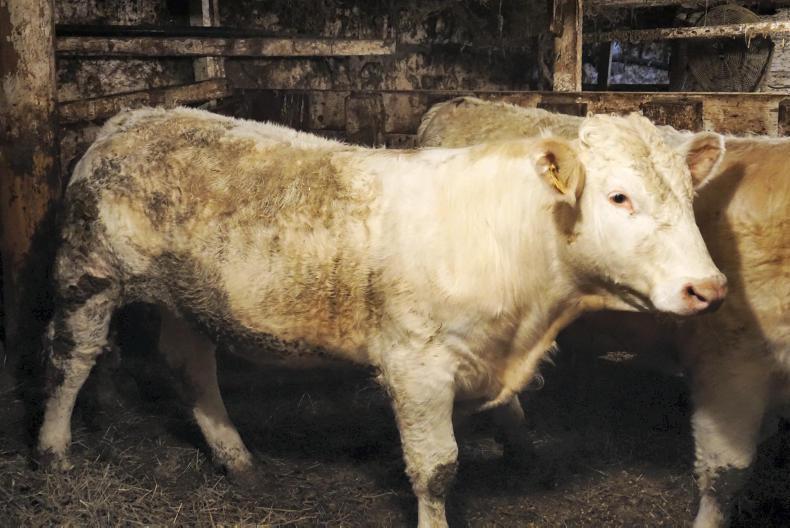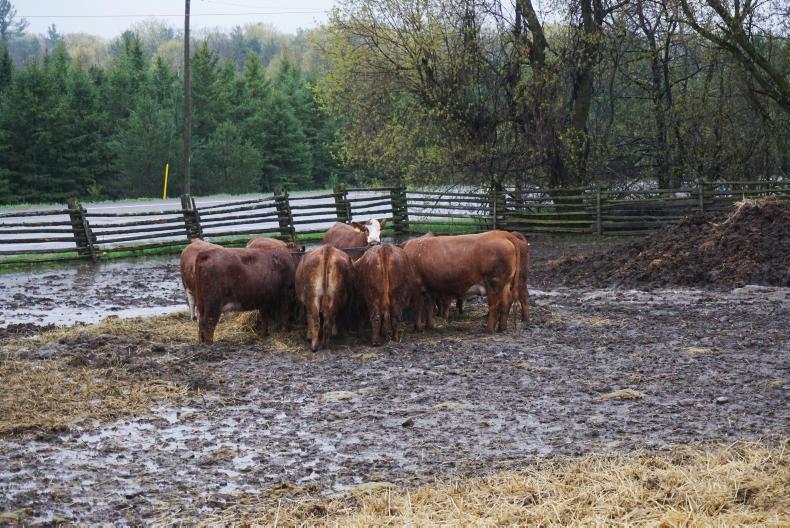Just as water levels in the River Shannon are keenly watched by farmers in the west of Ireland, levels in Lake Ontario are the issue for farmers in the provinces of Ontario and Quebec in Canada. Exceptionally heavy rainfall recently has left water levels in the lake at a 24-year high and more heavy rain was forecast until this weekend.
Planting of spring crops is usually in full flow during the first week of May, but machinery is parked up, even in the most free-draining land.

Cows and calves that normally move between a dry paddock for feeding and a barn that provides shelter for the cold Canadian winter are currently standing knee-deep in mud.
The Irish Farmers Journal visited three cow-calf farms, or what we would know as suckler farms, this week. The Irish perception of North American beef production is often of massive feedlots with thousands of cattle and huge prairies that carry the breeding stock. However, in the Ontario region of Canada, there is a family farm-type model, very similar to what we have across the island of Ireland and in Scotland.
All of the farms visited carried top-quality livestock and are just outside Cobourg, a large town between Toronto and Ottawa.
Ivan Hutchinson’s (pictured) farm was established in 1973 when he and his wife worked in a local factory to generate the finance to pay for the farm. It operated as a commercial herd up until 1999, when he started showing cattle and moved into pedigree Charolais cattle.


Ivan currently carries a herd of 25 cows and is a regular on the show circuit, collecting numerous prizes along the way. He has retired from his off-farm work and is now fully engaged with the cattle.

Doug and Bonnie Gray (pictured) are neighbouring farmers with a herd of 85 predominantly Angus cows, to which he has moved to introduce a Simmental bull.
Their farm is of a lighter soil type and was particularly ravished by last summer’s exceptional dry spell. Historically, this type of land was used in tobacco production. He participates in Ontario’s Going Forward programme, an environmentally-focused scheme.
The farm is home to a rare and protected bird species, the Babolink, and Doug has created a special reservation area for the bird to reduce the risk of his entire farm being subjected to production controls. He has demonstrated that the Babolink prefers this area and naturally lives in and around it, as opposed to the commercial grassland area.
Listen to an interview with Doug in our podcast below:
Listen to “Canadian beef farmer Doug Gray” on Spreaker.
Pat McLaren is a cow-calf farmer that many Irish suckler farmers will identify with.
As well as keeping 25 cows, he works full time off-farm in construction. He is focused on his business, and while he would like more from the market, he is very philosophical about it saying that it is what it is. A calf per cow per year is his firm belief, and if a cow isn’t in calf, she will be culled.

He has invested in a modern barn or shed, measuring 100ft x 40ft. Unlike the typical Irish shed, it is built with timber, lightweight steel and a tarpaulin-type cover. The budget for this shed is in the region of $25,000 to $30,000 Canadian dollars (€16,500 to €20,000).
His ambition for retirement is to build up cow numbers to 35 and sell his calves straight from the cow as stockers, or what we know as weanlings.
Listen to an interview with Pat in our podcast below:
Listen to “Canadian suckler farmer Pat McLaren” on Spreaker.
While Canadian cow-calf farmers have much in common with their Irish counterparts, they don’t require the same level of farmyard investment due to the drier climate.
They also have not had the same level of government investment in cattle-handling facilities or slatted tanks. Assistance is given under the Going Forward programme for environmental-type schemes and some equipment, such as cattle crushes, but it isn’t enough to drive a farm buildings programme.
Small farmer are also being squeezed by large grain or dairy producers, as well as new entrants from the surrounding cities that have money to invest with the increase in city house prices. That means that either for rental land or purchases, smaller farmers are getting squeezed out.
Land rental is in the region of $60 to $90 Canadian dollars per acre (€40 to €60/acre), which would seem very reasonable to farmers across Ireland or Scotland.






 This is a subscriber-only article
This is a subscriber-only article
















SHARING OPTIONS: